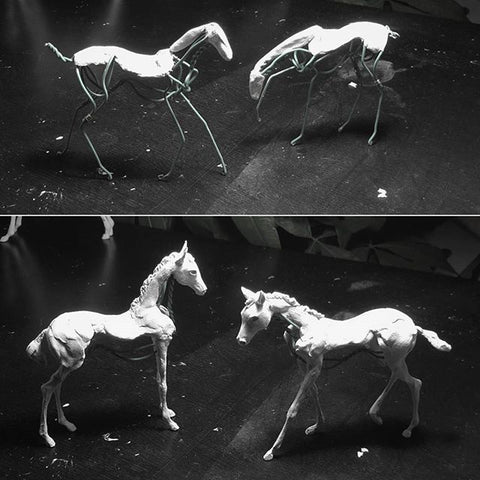
Disclosure: This post contains some affiliate links. I may earn a small commission at no extra cost to you, supporting my blog and content creation. Thank you!
---
As artists, our curiosity propels us to continuously seek and experiment with different materials in our creative pursuits. If you're stepping into the intriguing world of sculpting or seeking a worthy alternative to ceramic clays, let's delve into two popular clay sculpting mediums: air dry and epoxy clays.
To cure or to dry? That is the question!
Artist clays that bypass the need for a kiln or oven (like ceramic and polymer clays), essentially fall into two categories:
1) Air dry clays, primarily water-based
2) Epoxy clays, which undergo a curing process through a chemical reaction, typically sold in two separate components that are mixed together.

Battle of the Clays: Epoxy vs Air Dry
Several factors distinguish these two types of clays, and knowing these differences can assist you in making an informed choice:
The Cost Factor 💸
Epoxy clays are generally pricier. For instance, as of June 2023, a package of Creative Paperclay (453g or 1lb) roughly costs $16 US, whereas the same quantity of Apoxie Sculpt is $34 US. Your decision, however, may depend more on other factors rather than solely on price.
Dry Time 🕒
Air dry clays allow for an almost indefinite workable time frame. They can be kept moist for extended periods, and adding water to the not-yet-dry clay brings it back to life. In contrast, once mixed, epoxy clays will cure within several hours (it varies between brands), with no pause button.
Although this rigidity might not suit every sculptor, it's worth noting that both clay types can be sanded, drilled, and carved after drying or curing. So, revisions and re-sculpting are still on the table.
Sensitivities 🐱
Epoxy clays can potentially cause skin reactions due to their organic compounds, often required for triggering the chemical curing process. However, wearing gloves while mixing can prevent any potential irritation.
On the other hand, air dry clays like Premier and Creative Paperclay are non-toxic, making them a safer choice for the more health-conscious or accident-prone artists among us.
Weighing Up 🏋️
Epoxy clays generally cure stronger but also heavier than air dry clays. This isn't necessarily a disadvantage but is worth considering based on the specific demands of your project.
Tools of the Trade 🔨
While epoxy clay doesn't demand specialized tools, you can invest in extras to enhance your sculpting experience. For instance, many brands offer special fluids for smoothing the clay.
One thing to be aware of is that epoxy clay once dry can stick to tools and damage them. Always ensure you clean your tools and brushes to prevent this.
The best tools for air dry or epoxy are the same as for sculpting in ceramic, so if you're just starting, pottery tools are a good resource.
Storage 💾
While the shelf life of epoxy clay is usually over a year, but I find that one of the parts always ends up curing a bit overtime.
Air dry clay once opened needs to be stored carefully to prevent it from drying out, but I have also had opened packages usable for up to a year as well. It helps to add water every now and then. Read more about clay storage.

Hopefully this breakdown has given you some ideas on which sculpting clay would be suitable for your work. I Find there is a place for both of these in my studio practice.
Embracing Epoxy
If you find the characteristics of epoxy clays appealing, here are some popular choices:
- Apoxie Sculpt: probably one of the most well known types. Comes in a slew of colours. The company Aves makes a variety of epoxy clays (some firmer, some with texture), of which Apoxie Sculpt is the cheapest.
- Magic Sculpt: Another very popular brand. About 5 different colours.
- Milliput: more popular with hobbists, but great because it can be purchased in small amounts. Also only 5 colour options.
Did you know? Some ceramic artists will use epoxy clays to bind fired ceramic elements together, maintaining the clay-like appearance. The possibilities are endless!

All About Air Dry Clay
Leaning more towards air dry clay? You can read all about my recommendations for air dry clay in this blog post.
Both air dry and epoxy clays are wonderful tools for sculpting, so whether you choose to use one exclusively, or you combine them with other clays, you are unlikely to be disappointed.
What's Next?
Discover the secrets of sculpting with Creative Paperclay
Find out about the best air dry clays for artists

